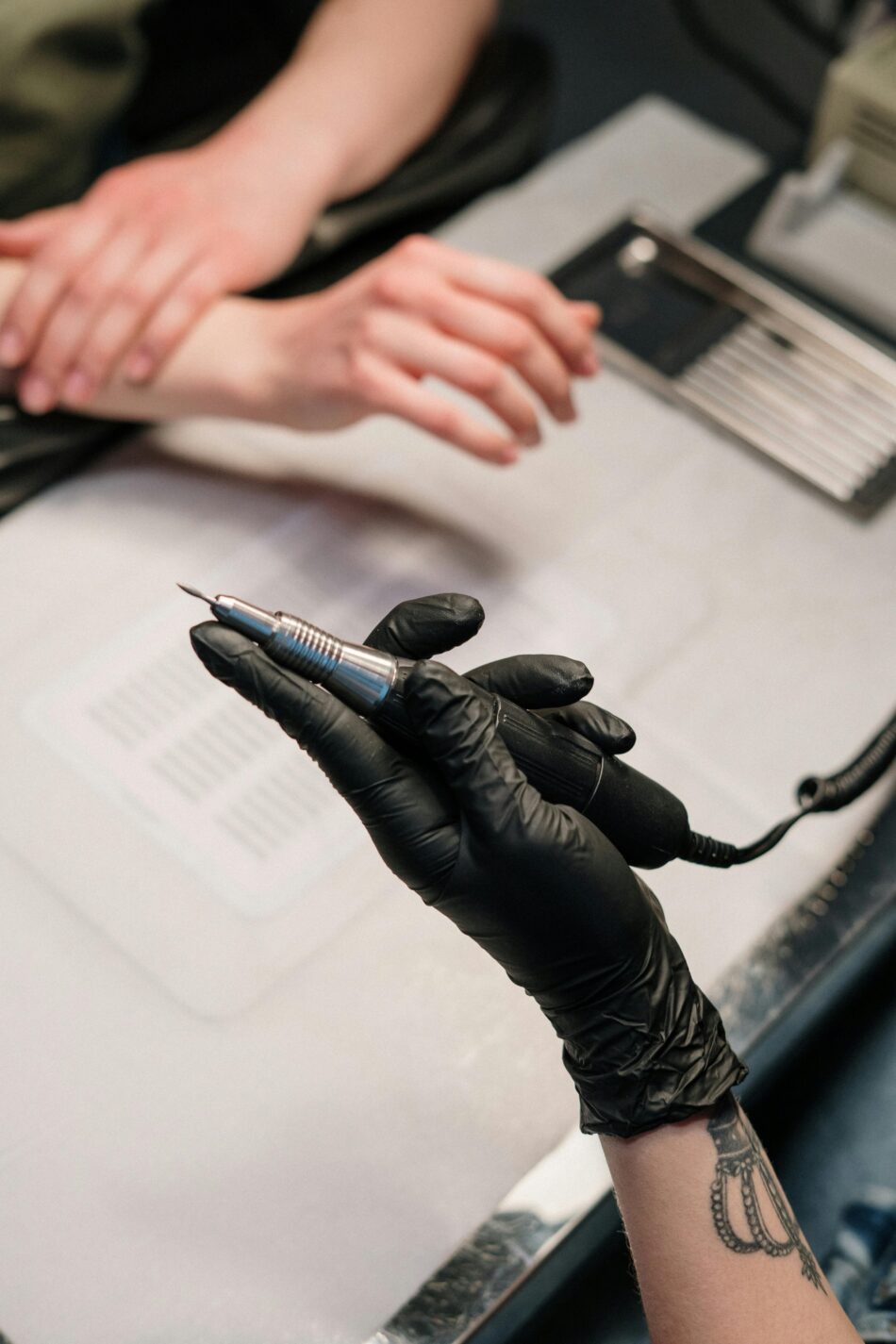Getting a tattoo is a permanent decision, but there’s more at stake than just the design. One of the most critical aspects of a safe tattoo experience is ensuring that all tattoo equipment has been properly cleaned and sterilized. Unclean tools can carry serious health risks, including infections, allergic reactions, and bloodborne diseases like hepatitis and HIV.
If you’re preparing for a tattoo appointment or simply doing your research, it’s important to recognize the signs of improperly cleaned tattoo equipment. Here’s how to protect yourself by understanding what clean and sterilized gear should look like—and the red flags to watch for.
Why Cleaning and Sterilizing Tattoo Equipment Matters
Tattooing involves breaking the skin, which means bacteria and viruses can easily enter the body if the equipment isn’t properly disinfected. Using proper tattoo cleaning supplies and following strict hygiene protocols helps eliminate cross-contamination and keeps both artists and clients safe.
Whether you’re an artist looking to refine your process or a client wanting to stay informed, knowing how to clean a tattoo gun and identify poorly cleaned tools is crucial.
Common Signs Tattoo Equipment Was Not Properly Cleaned
1. Unpackaged or Reused Needles
All tattoo needles should come in individually sealed, sterile packaging. If you see an artist opening loose needles from a container rather than sealed packets, that’s a major warning sign. Reusing needles without proper tattoo machine sterilization procedures is dangerous and unethical.
2. Stained or Dirty Tattoo Machines
Visible ink stains or dried pigment on a machine or other tools could indicate poor cleaning practices. Even if equipment looks superficially clean, it doesn’t guarantee it’s been disinfected. Cleaning tattoo machine components regularly with approved solutions ensures no biological material remains.
3. Lack of Autoclave or Sterilization Process
Ask if the artist uses an autoclave, a standard device for sterilizing equipment for tattoo work. An autoclave uses pressurized steam to kill pathogens. Artists should also have chemical indicators that show whether the sterilization cycle was successful. If there’s no autoclave present or the artist seems unsure about how it works, that’s a concern.
4. No Use of Disposable Barriers
Artists should cover tattoo machines, clip cords, and power supplies with disposable plastic sleeves. These barriers are replaced after every client to prevent cross-contamination. If tools are being used on multiple people without changing these covers, proper hygiene is not being followed—even if tattoo gun cleaner has been used in between.
5. Improper Glove Usage
Even the cleanest tattoo sterilization supplies are pointless if gloves are not used properly. Watch for whether the artist changes gloves after touching non-sterile surfaces like phones, doorknobs, or their own face. Gloves should be changed frequently during the tattooing process to maintain cleanliness.
Questions You Can Ask Before Your Appointment
Being informed is your best defense. Here are some respectful but direct questions you can ask a tattoo artist:
- “How do you handle cleaning tattoo equipment between clients?”
- “Can I see how your tattoo sterilization supplies are stored?”
- “Do you use an autoclave, and how often is it tested for efficiency?”
- “What’s your process for how to clean tattoo machine parts after use?”
A professional artist will never hesitate to explain their hygiene practices and should be able to show you how they manage tattoo machine sterilization and cleaning protocols.
What Proper Cleaning Procedures Look Like
Step 1: Disassemble and Clean the Machine
After every session, the artist should disassemble the tattoo machine. All removable parts should be wiped down with a certified tattoo gun cleaner to remove visible ink, blood, and debris. Ultrasonic cleaners can be used for deep cleaning.
Step 2: Sterilize Non-Disposable Parts
Once cleaned, parts that are not disposable should be placed into an autoclave for full sterilization. This includes grips, tips, and machine casings if they are made from autoclavable material. Sterilization tattoo protocols must be followed strictly to kill all bacteria and viruses.
Step 3: Dispose of Contaminated Materials
Needles, ink caps, and gloves should be disposed of after each session. Never accept reused or “re-sterilized” disposable items. No amount of tattoo cleaning supplies can make a disposable needle safe for reuse.
Step 4: Clean the Work Area
The entire work area should be cleaned with disinfectant before and after each client. This includes chairs, trays, light handles, and any other surfaces that might have been touched.
What to Do If You Suspect Poor Hygiene
If something doesn’t feel right during your consultation or tattoo session, you’re well within your rights to leave. It’s better to delay your tattoo than risk a serious infection.
Also, if you’ve already been tattooed and notice symptoms like unusual redness, pus, fever, or prolonged pain, consult a medical professional immediately. These could be signs of an infection caused by unsterilized tools or poor aftercare.
Clean Equipment Is a Sign of Professionalism
Proper hygiene is not optional in the tattoo industry—it’s a legal and ethical responsibility. Artists who take time to invest in quality tattoo cleaning supplies and practice thorough tattoo machine sterilization are protecting their clients and their own reputation.
Tattoo professionals must stay up to date with regulations regarding cleaning tattoo machine components and using approved tattoo sterilization supplies. Routine training and certification in bloodborne pathogens are also essential.
Final Thoughts
Recognizing the signs of improperly cleaned tattoo equipment can help you avoid health risks and choose a responsible artist. Whether you’re a first-timer or a regular client, always pay attention to the environment and equipment before sitting in the chair.






